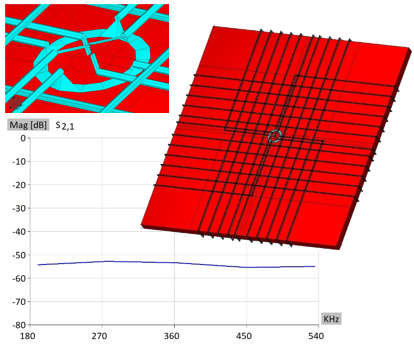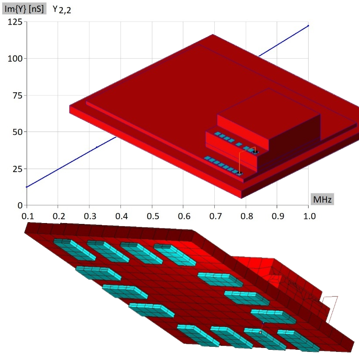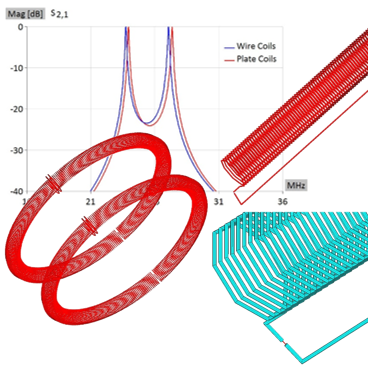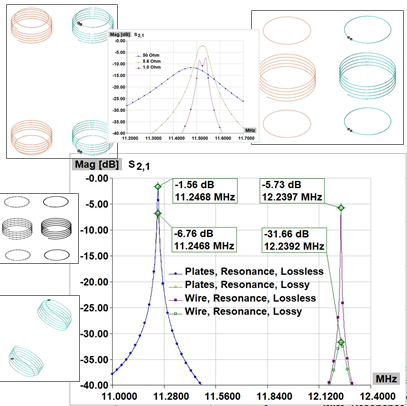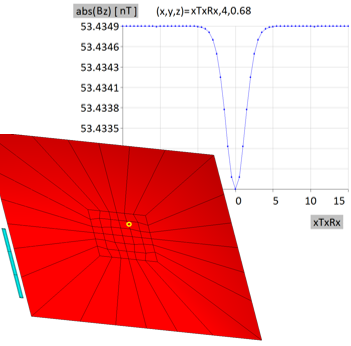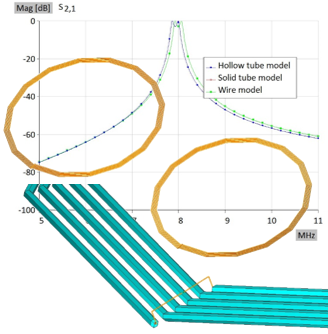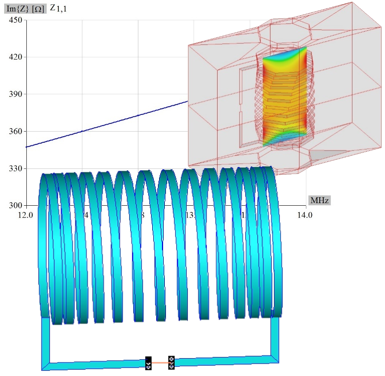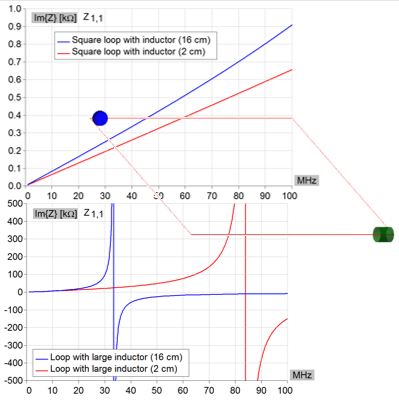Direction Finding Antenna (DFA)
A magnetic antenna system, which has been patented by G. Wennerberg, could be efficiently used as a direction finding antenna (DFA). This magnetic antenna system represents an improved magnetic antenna, especially suitable for mounting on an aircraft as it does not include any moving parts.
In this application note we present simulation details for electrically small direction finding antenna comprising 2 coils wrapped around the magnetic material. Two wrapped coils are winded in the orthogonal direction. The smallest mesh element found in the DFA is about 0.2 mm long and it represents approximately 1/8,000,000 fraction of wavelength.
The DFA has been simulated using WIPL-D Pro, a mature, full wave 3D EM solver, based on method-of-moments (MoM). In general, MoM codes have been often challenged when a simulation model corresponds to a very small or moderately small device, such is the case with direction finding antenna presented here. For such a simulation, other numerical methods such as FEM or FDTD are widely used. However, in this particular application note, we demonstrate that this state-of-the-art MoM code can be used successfully and with high efficiency for simulating an electrically small structure.
The application note actually demonstrates that WIPL-D Pro can be used for simulation at extremely low frequencies where a typical MoM code is not typically used. In addition, it is shown that the special techniques for treatment of low frequency problems results in an extraordinary accuracy as the results remain accurate at the coupling levels down to -60 dB levels for coupling between the two antenna ports. Finally, it is shown that no expensive hardware is required as the simulations can be carried using standard desktop PC or laptop.


